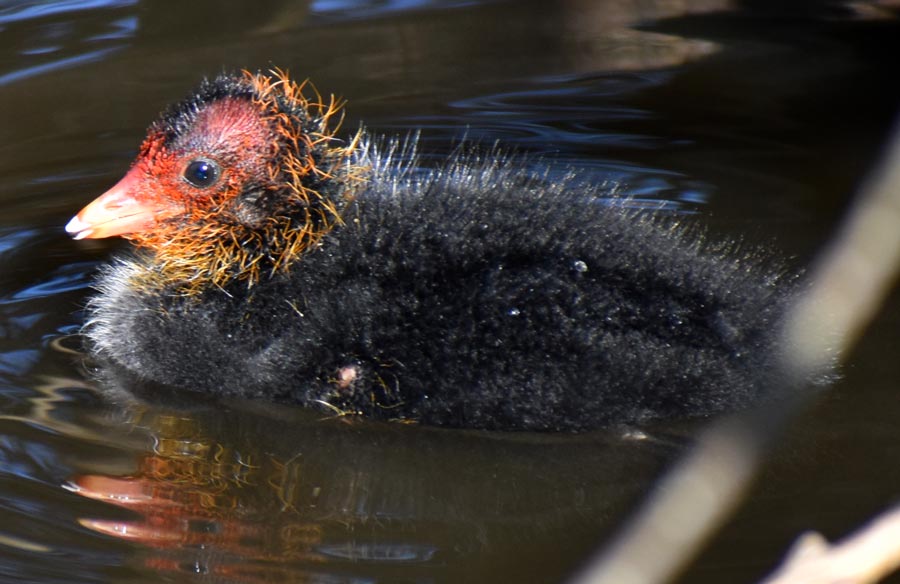| TALES OF HEATH & POND |
VISITOR'S GUEST BOOK | HISTORY OF THE HEATH & POND | GUESTS' PHOTOGRAPHS | SOURCES OF INFORMATION | VIDEOS | SITE MAP |
Moorhens
To see a larger copy of each image click on it; to see the next large image click at the right of the image, to go back click on the left of the image. To close a large image click on the cross in the top right hand corner.
New photographs are usually added to the bottom of the page - click to go to the bottom of this page
2020 |
||
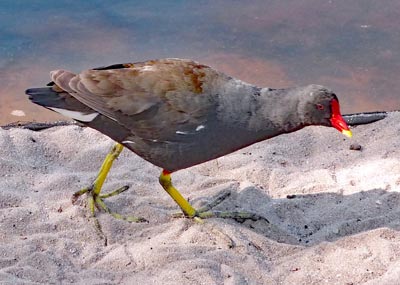 |
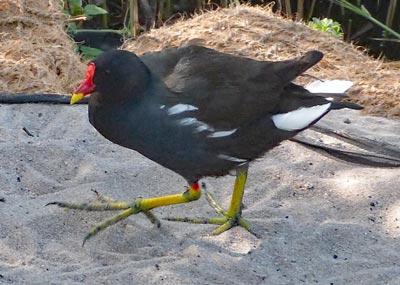 |
|
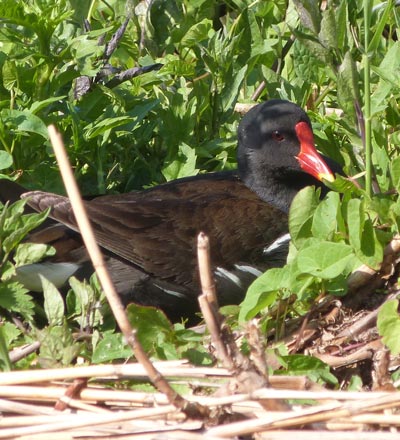 |

The Moorhen appears mostly black, but a closer look reveals blackish-brown upperparts and grey-black below. Underneath the tail (undertail coverts) are white and there is a white line along the flank. The bill and frontal shield (forehead) is red, the bill having a yellow tip. The legs and feet are a striking yellow-green, and if you are lucky you may catch a glimpse of the red "garter" at the top of the legs. The toes are lobed, not webbed. The eye is red. Moorhens feed both on water and land and so have a varied diet of leaves, seeds, berries, worms, snails and fish, and also other birds' eggs Generally, the female builds the nest among vegetation in the water while the male gathers the twigs, etc. Their eggs are smooth and glossy, greyish-white to green with reddish-brown or grey markings. They are about 43 mm by 31 mm. Both parents incubate the eggs and look after the precocial nestlings, which when newly hatched are fed in the nest for a couple of days before swimming with their parents. |
|
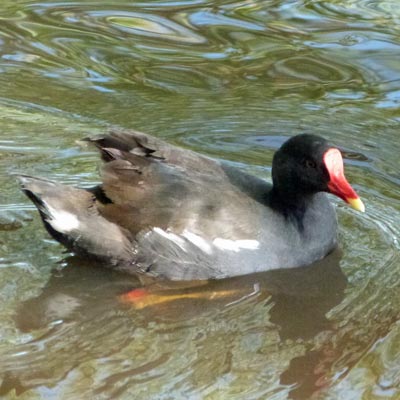 |
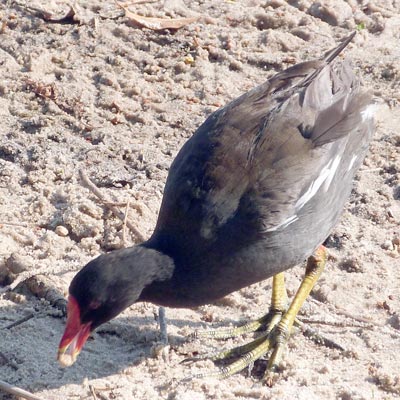 |
|
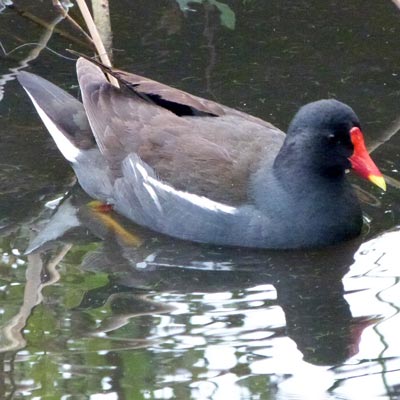 |
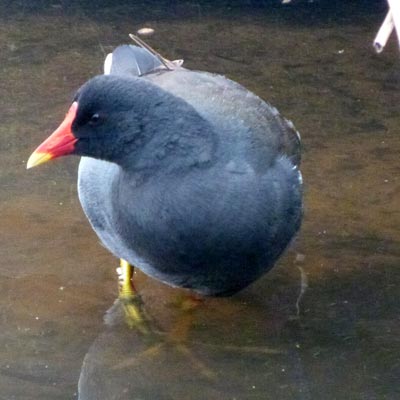 |
|
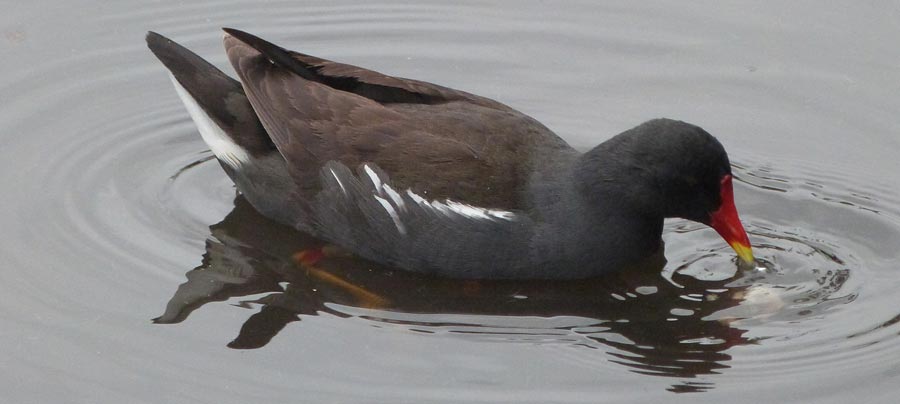 |
||
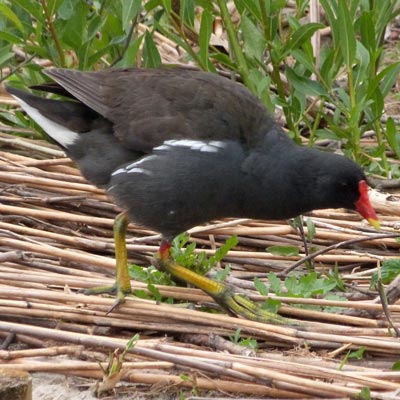 |
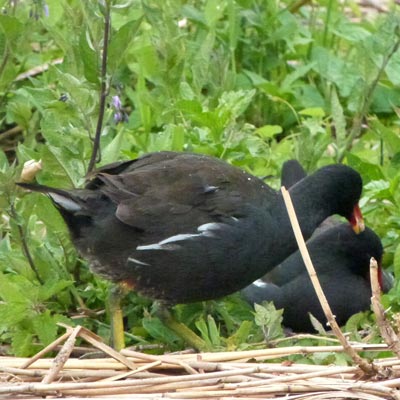 |
|
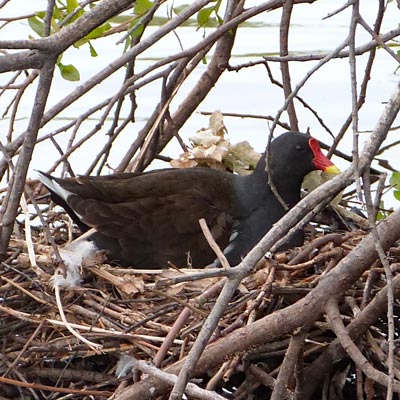 |
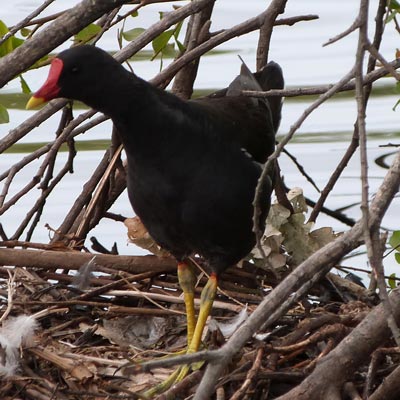 |
|
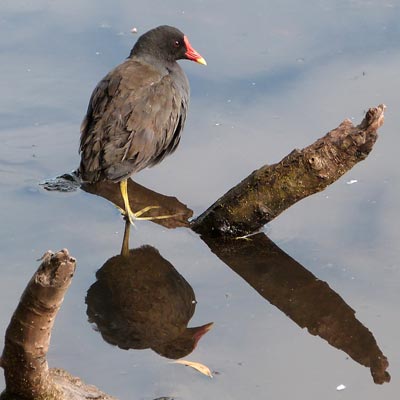 |
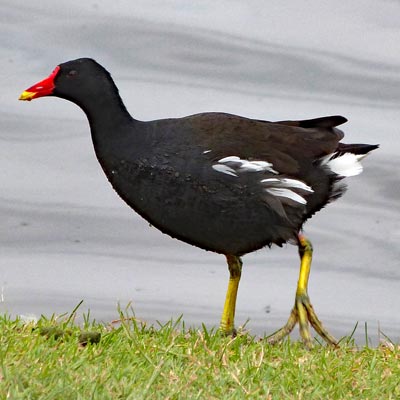 |
|
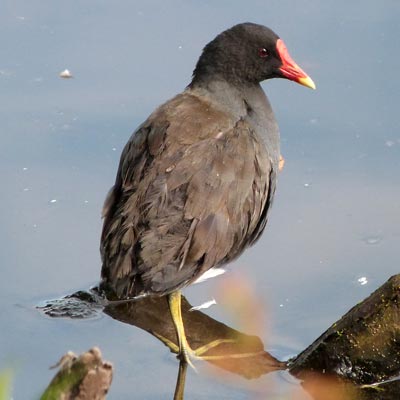 |
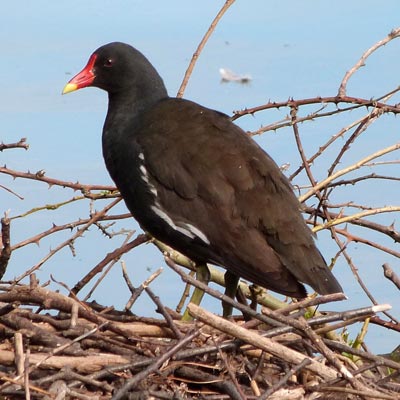 |
|
 |
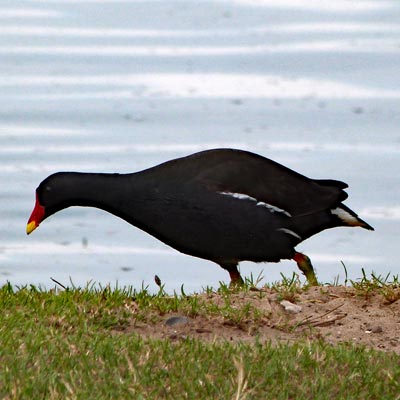 |
|
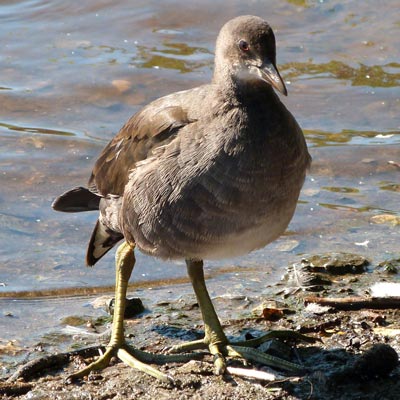 |
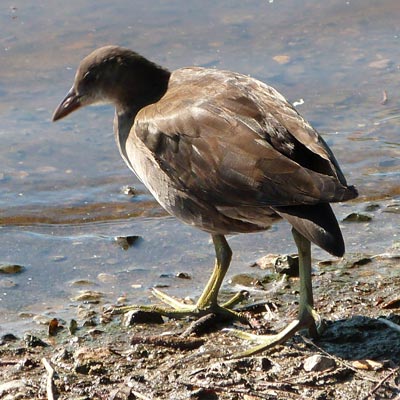 |
|
| Young Moorhens - though we never saw them as small birds | ||
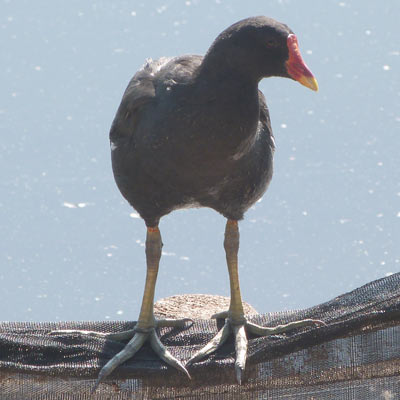 |
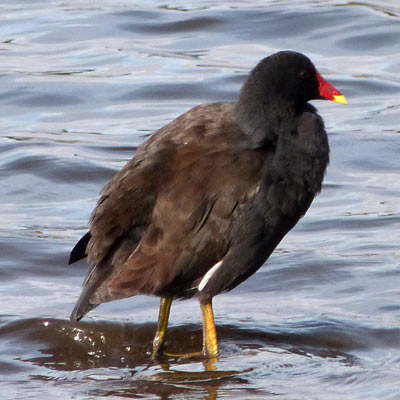 |
|
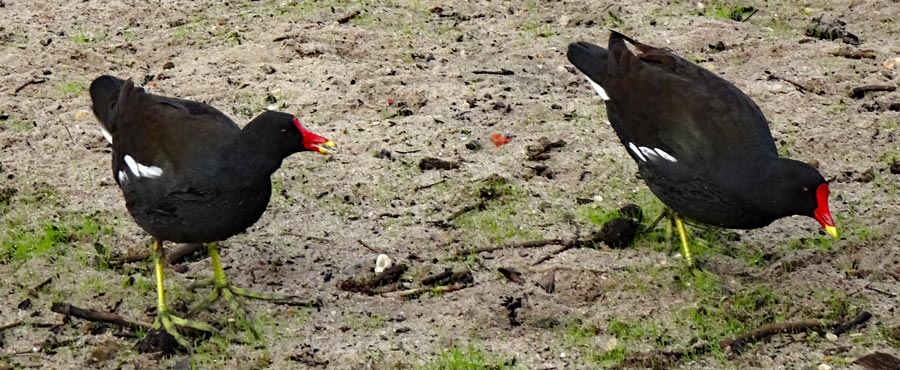 |
||
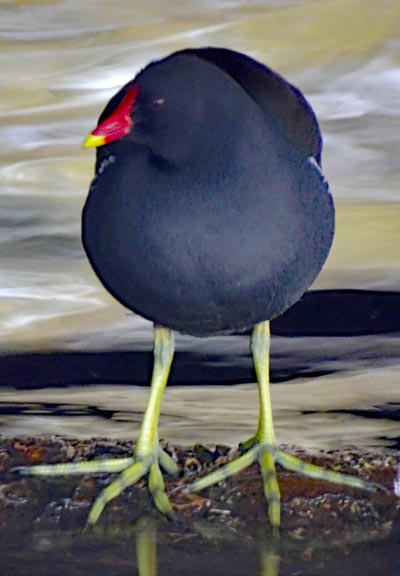 |
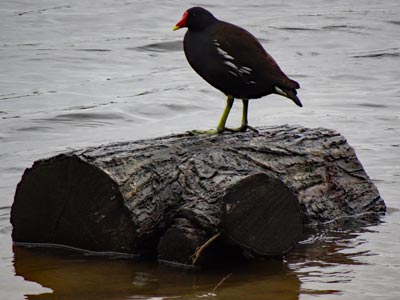 |
|
2021 |
||
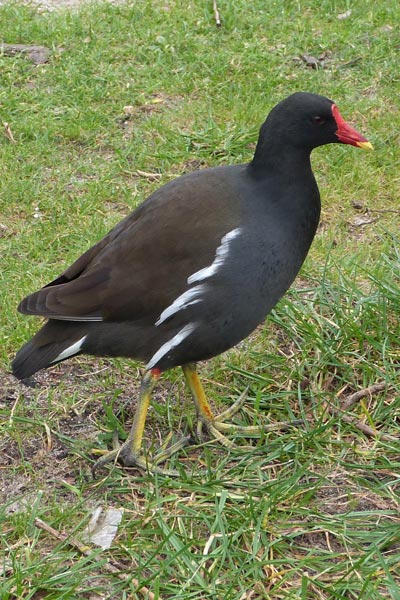 |
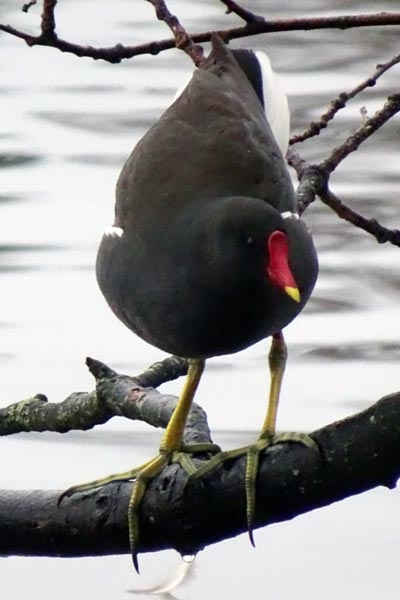 |
|
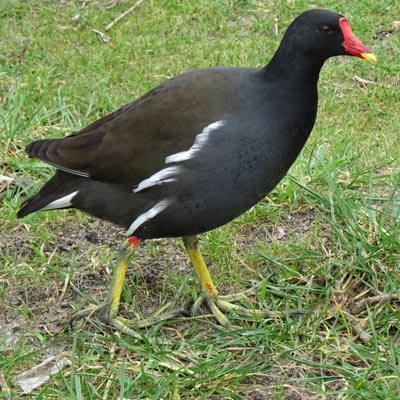 |
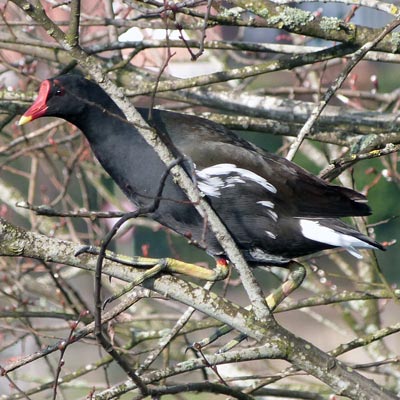 |
|
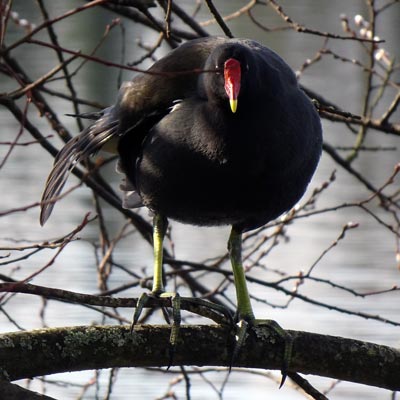 |
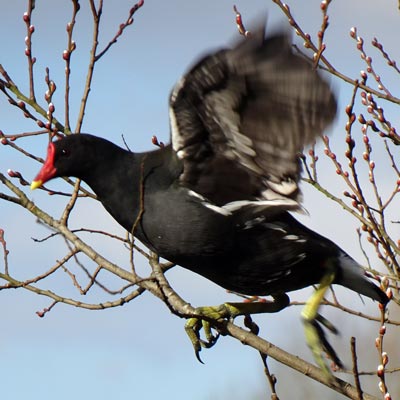 |
|
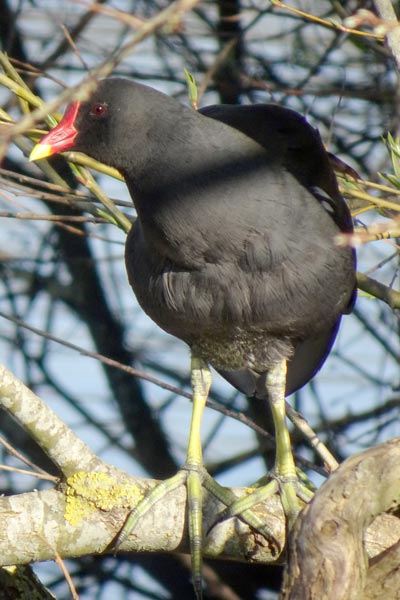 |
||
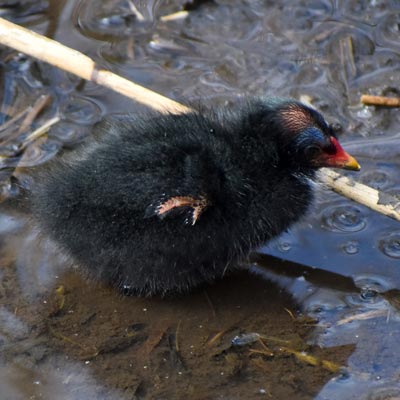 |
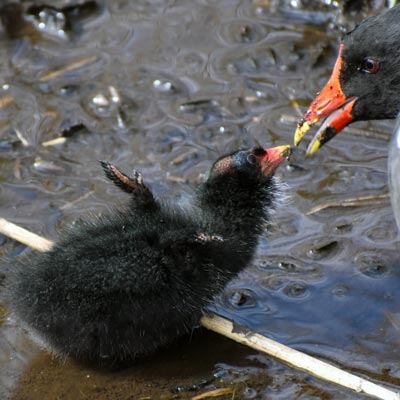 |
|
| Late April - at last we see two little moorhen chicks! | ||
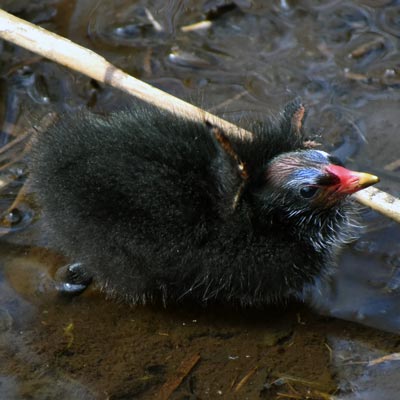 |
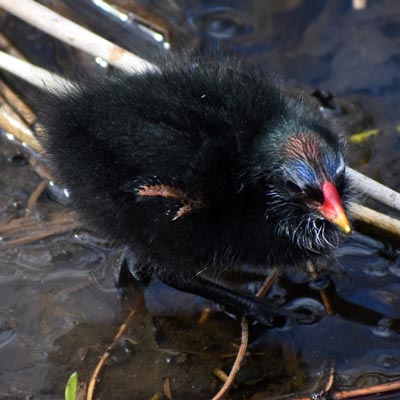 |
|
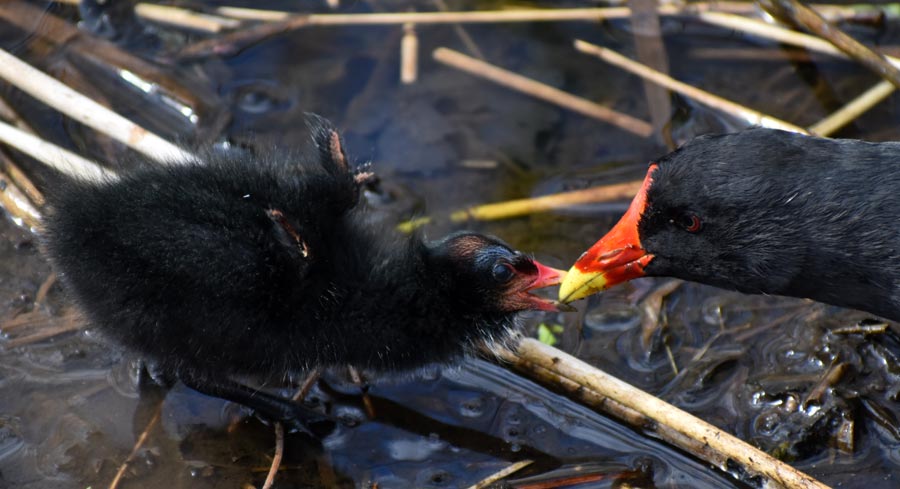 |
||
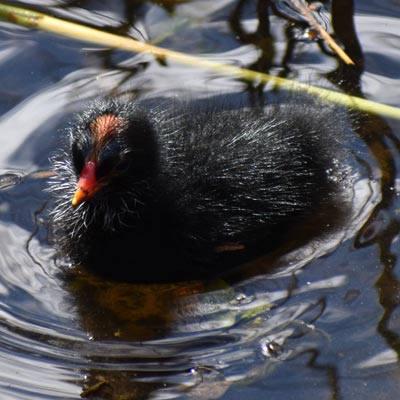 |
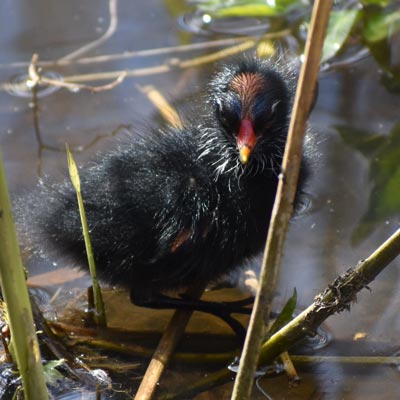 |
|
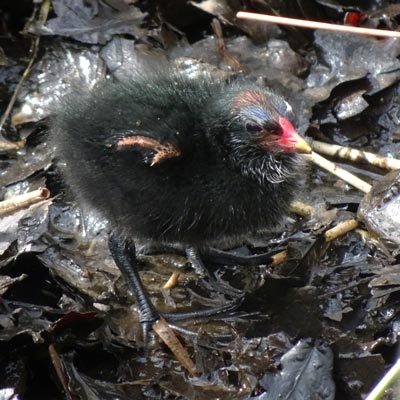 |
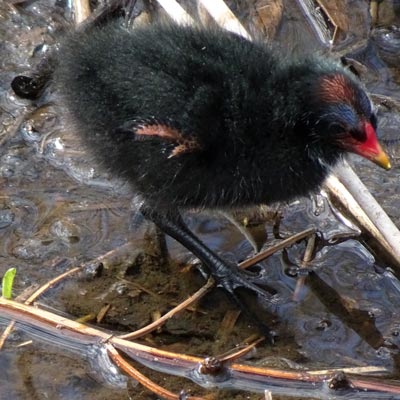 |
|
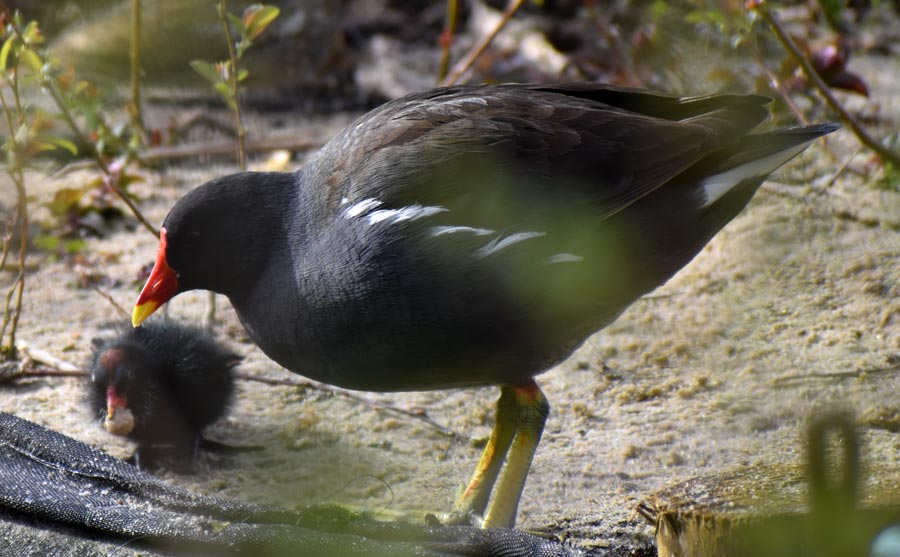 |
||
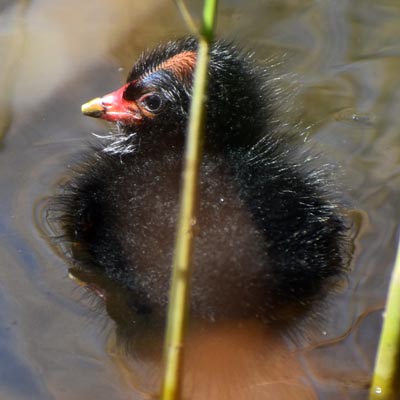 |
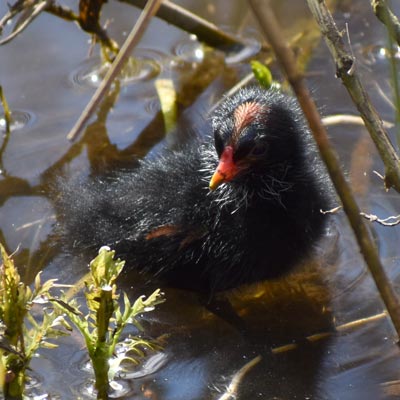 |
|
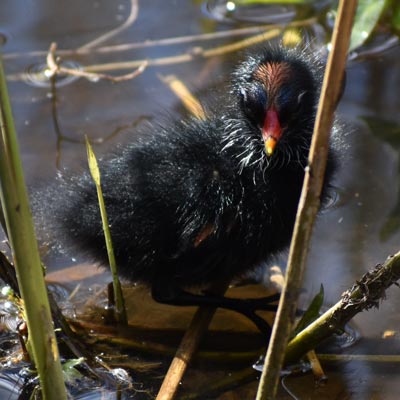 |
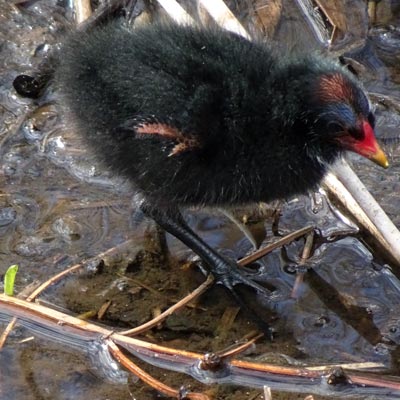 |
|
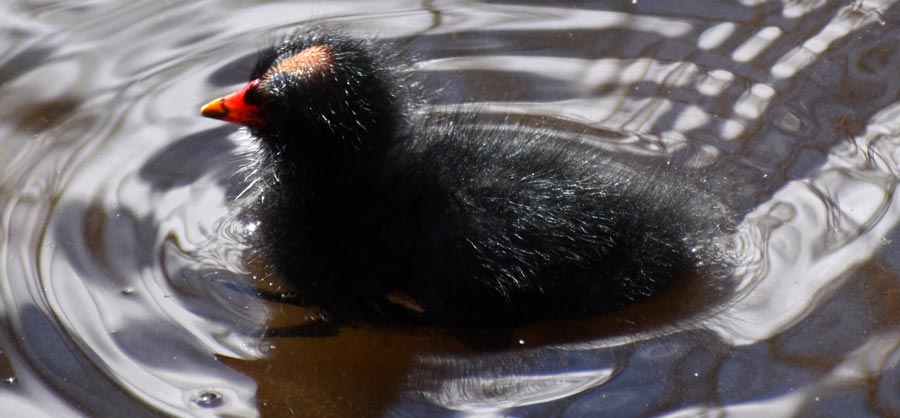 |
||
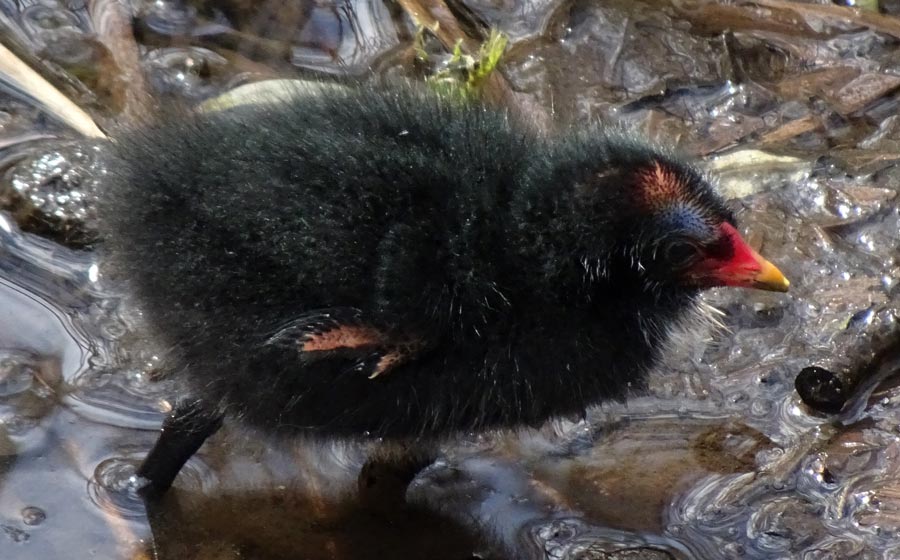 |
||
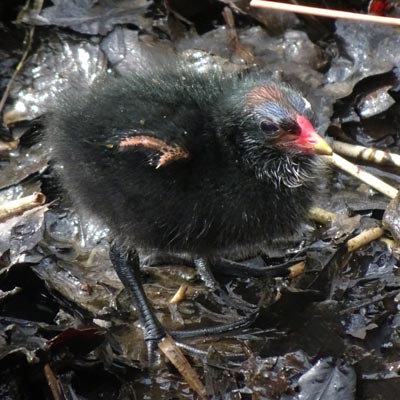 |
||
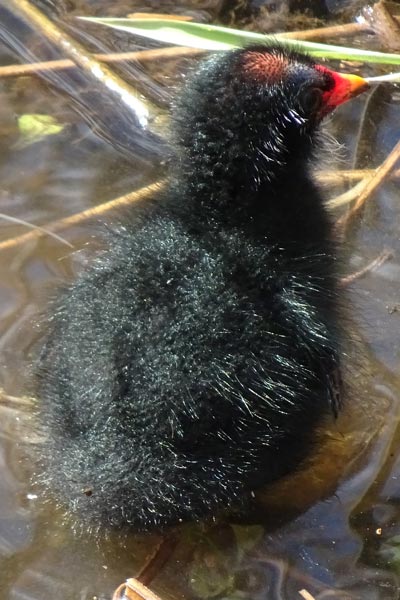 |
||
|
||
| Above: Coot | Below: Moorhen | |
 |
||
| Notice how similar baby coots and baby moorhens are. Coots have gingery hair on their heads, which are red, though their beaks are not as red as moorhens beaks. Both have devoted parents who bring food to them. | ||
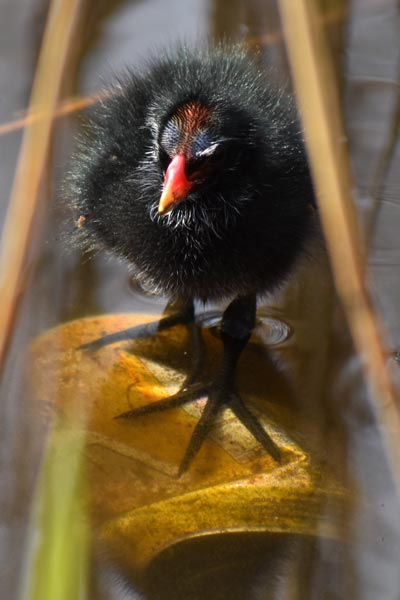 |
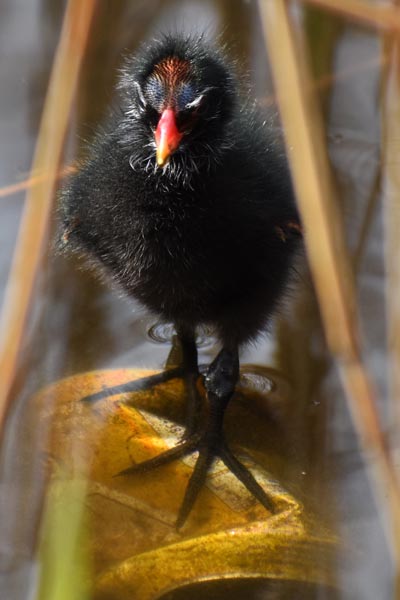 |
|
| At last - a good use for a emply beer can! | ||
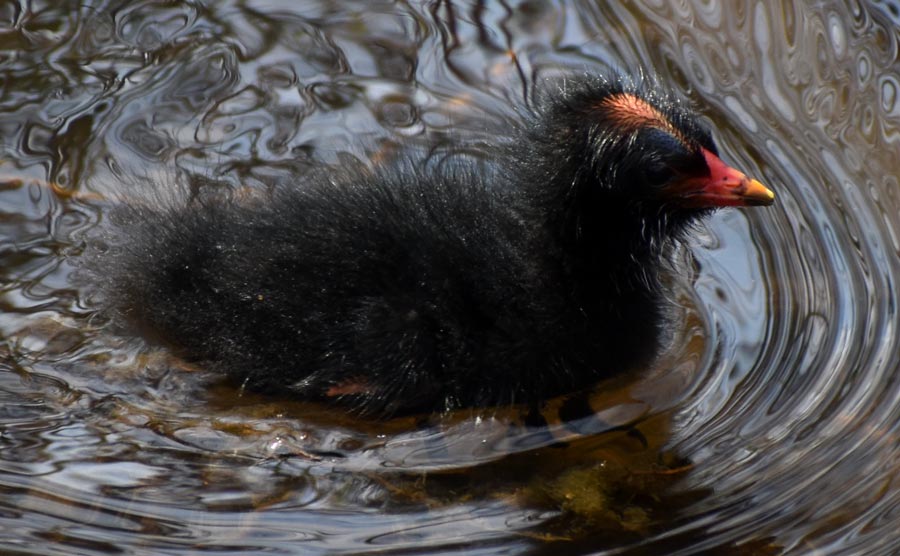 |
||
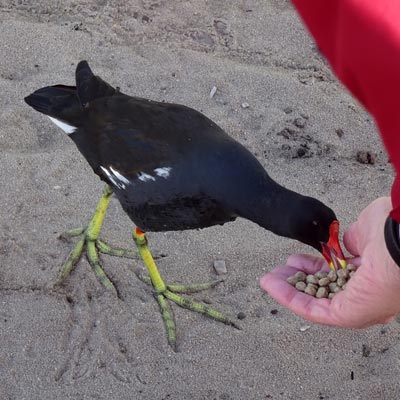 |
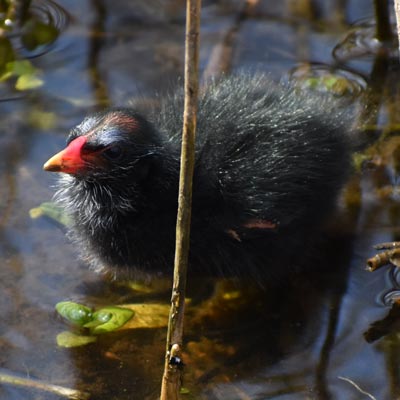 |
|
| Quite rare to have a moorhen eat from our hands! | ||
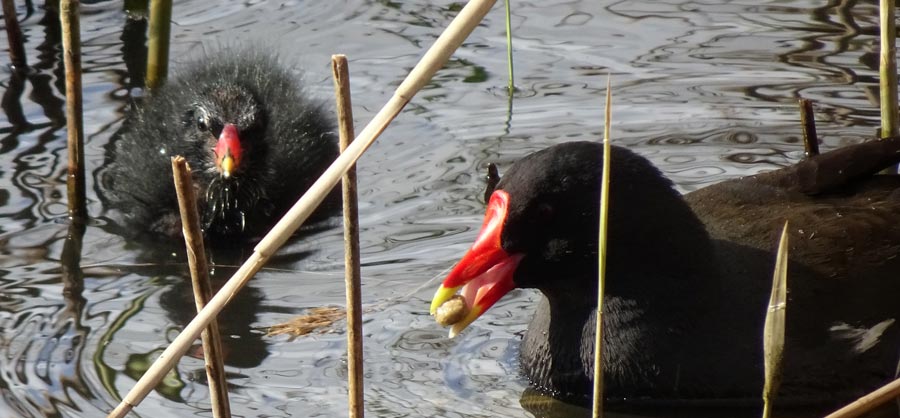 |
||
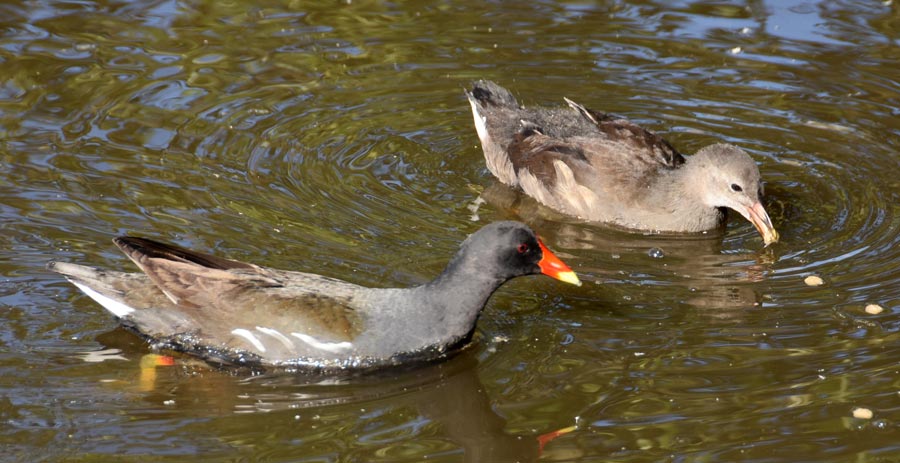 |
||
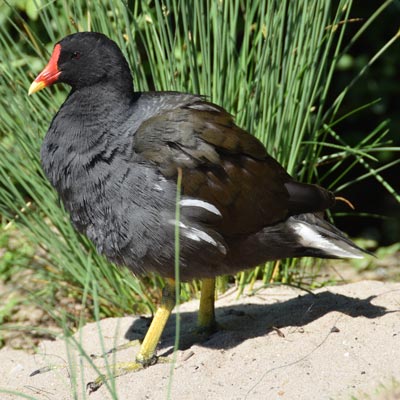 |
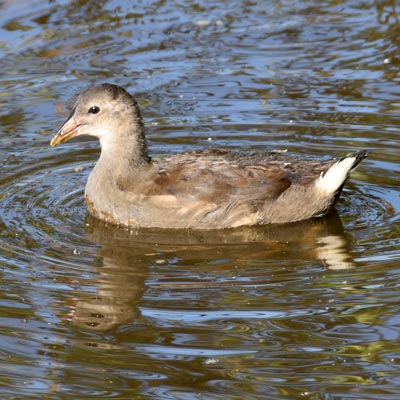 |
|
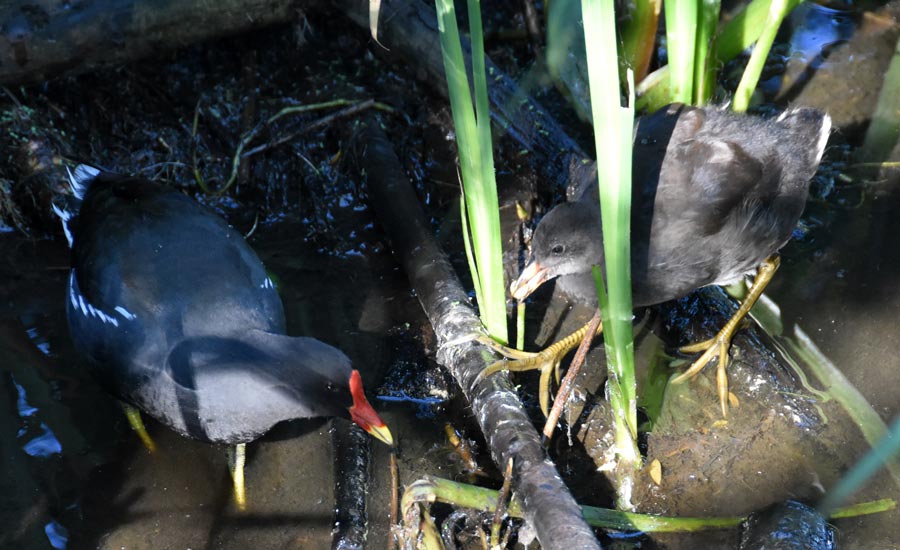 |
||
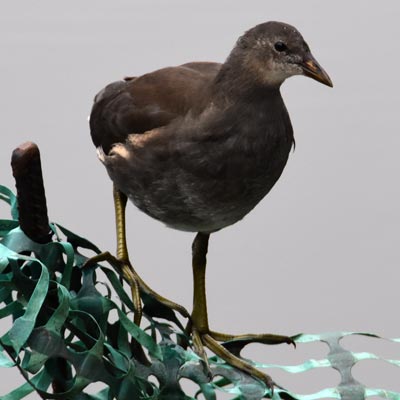 |
||
| Go to the top of this page | ||
